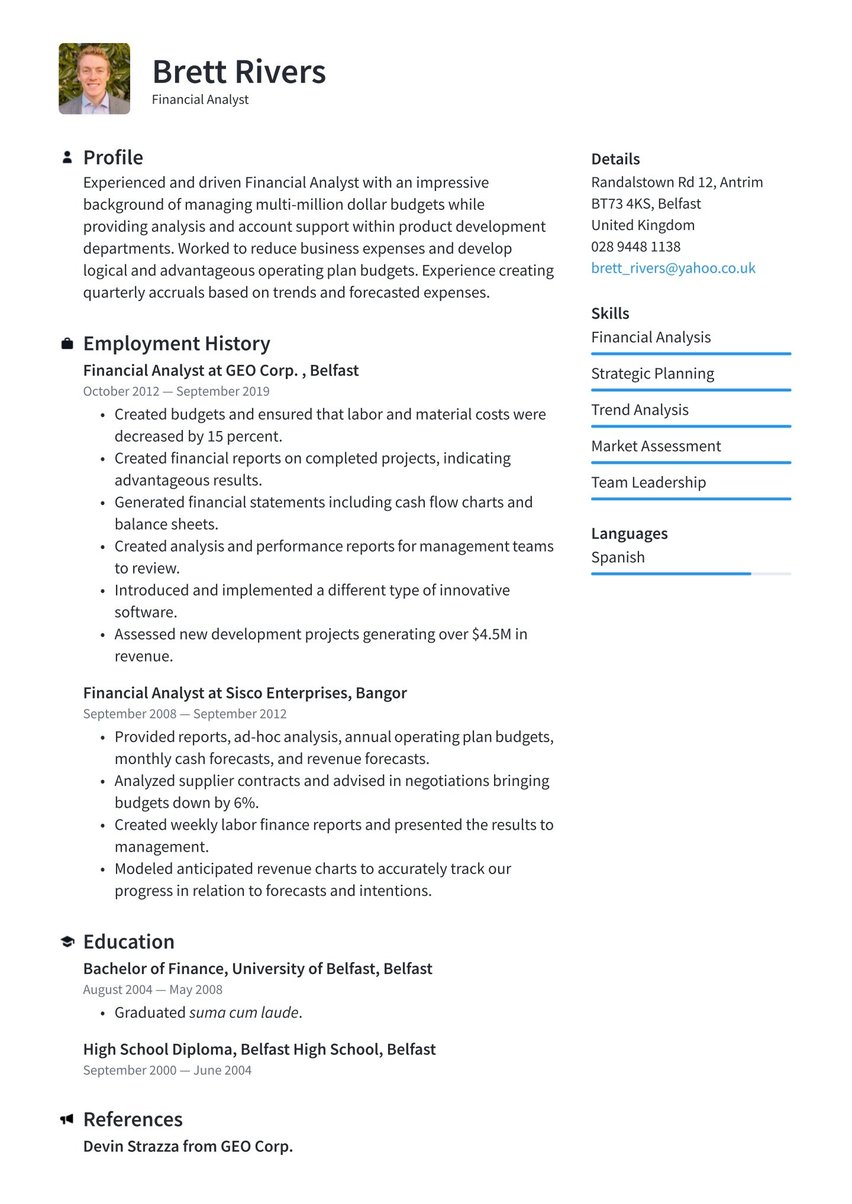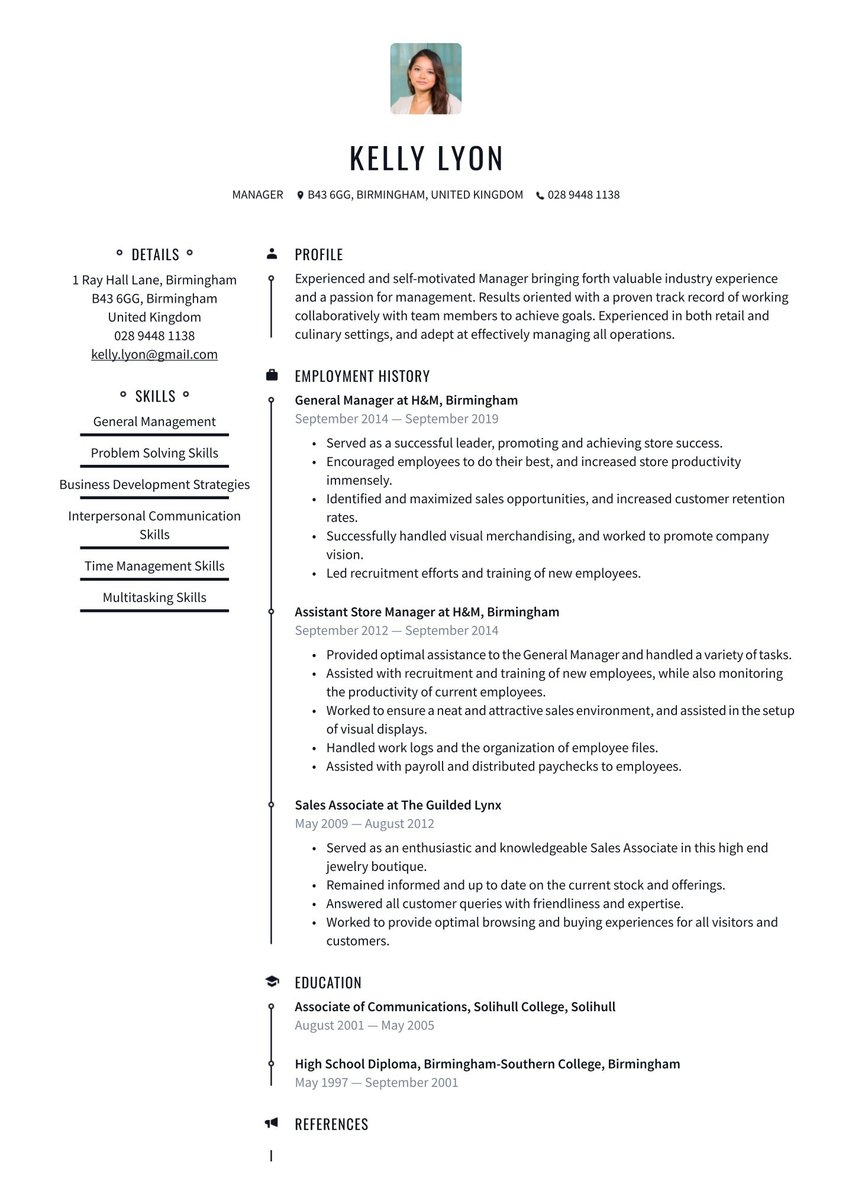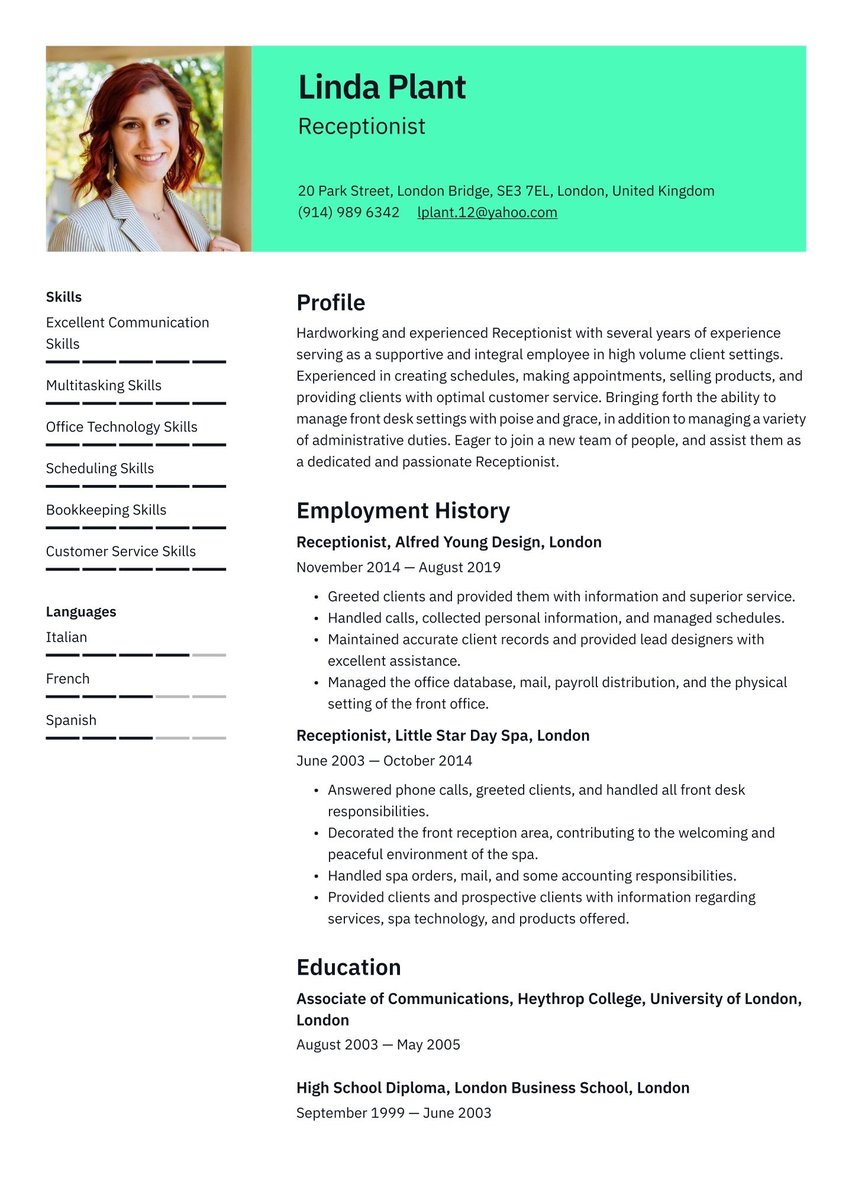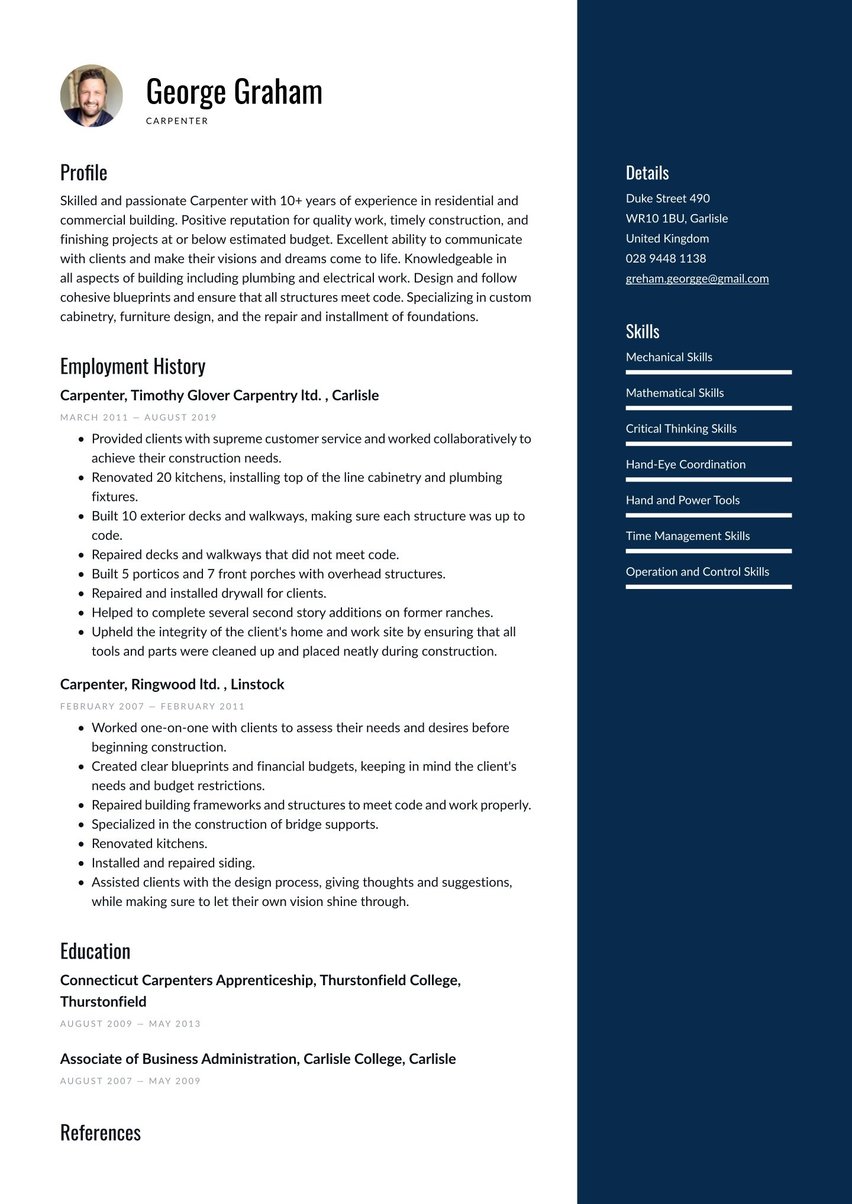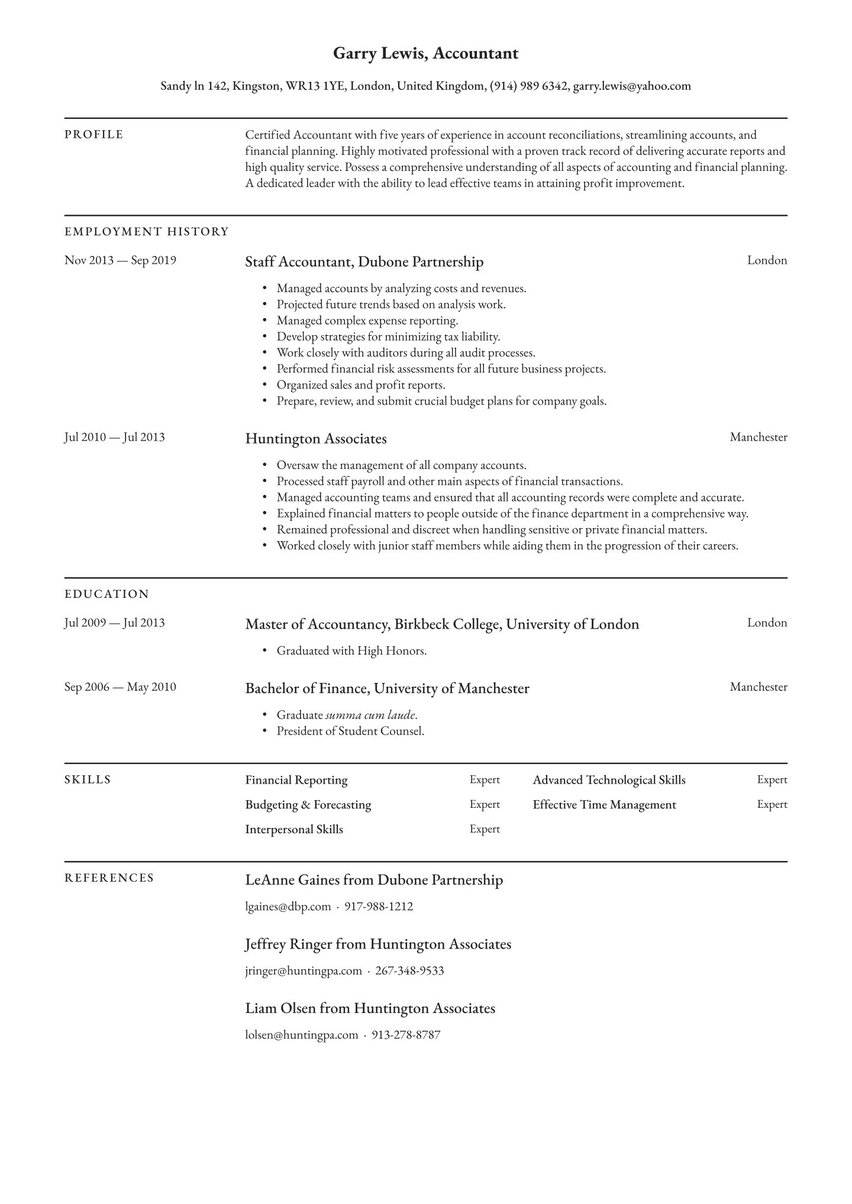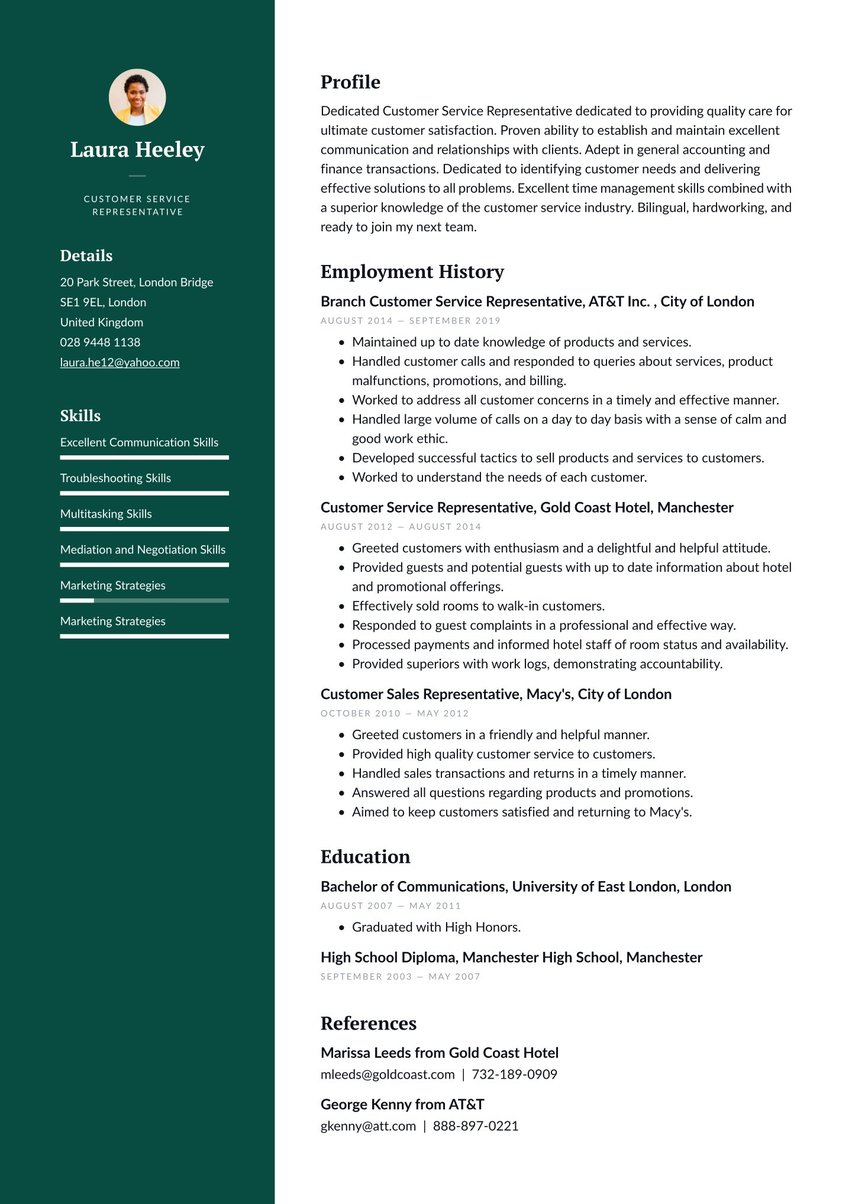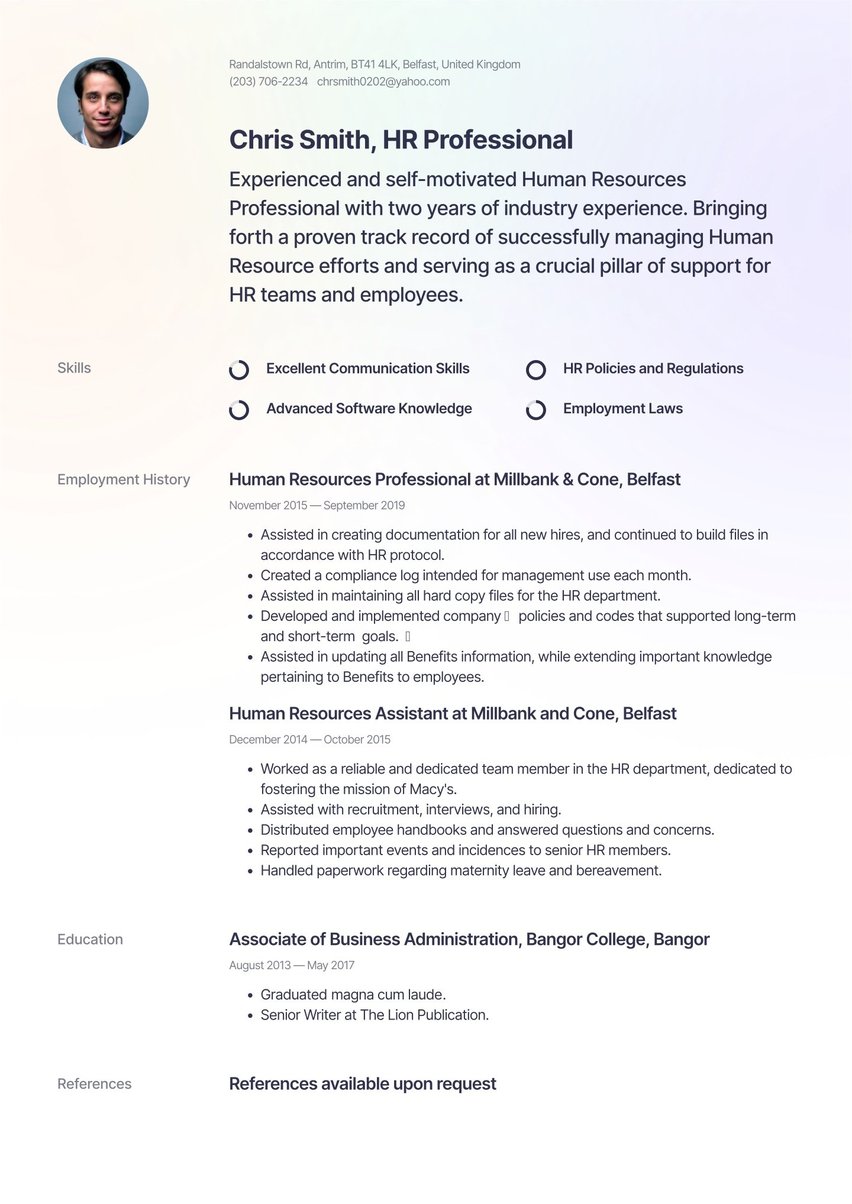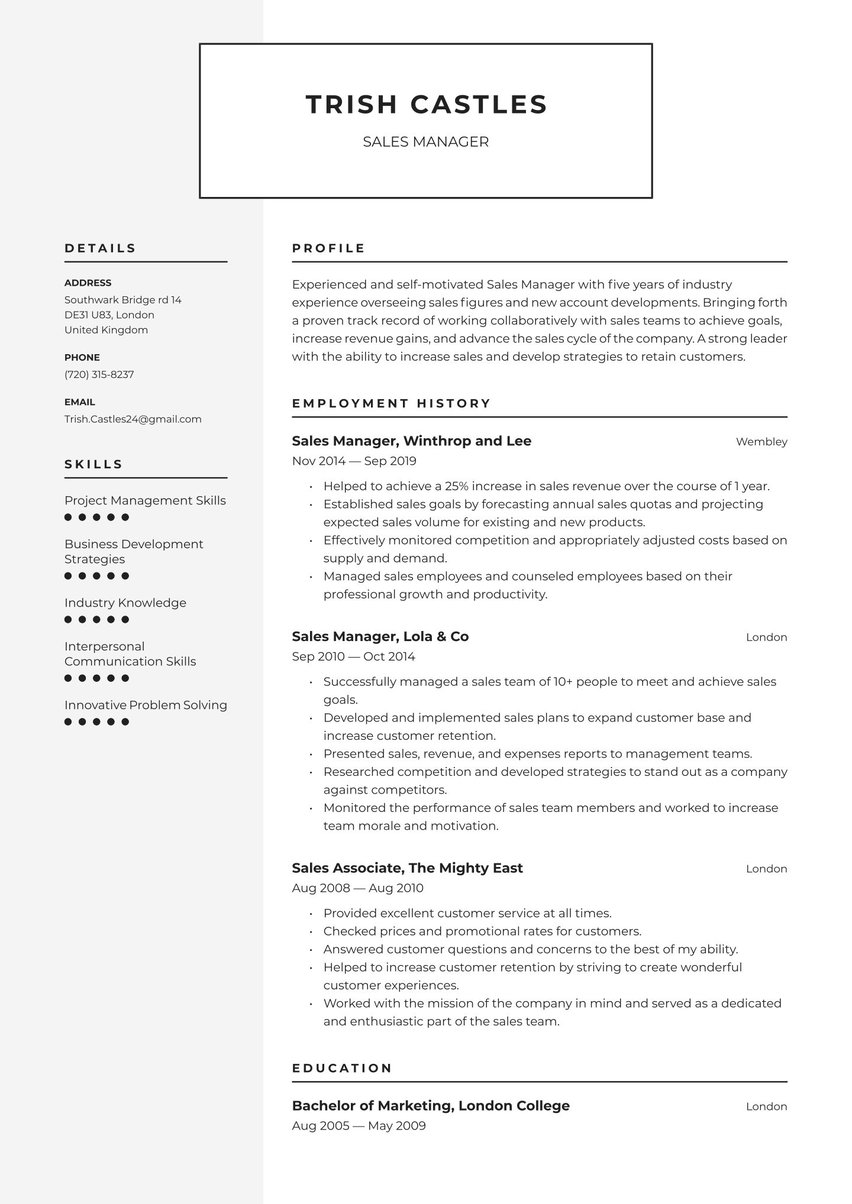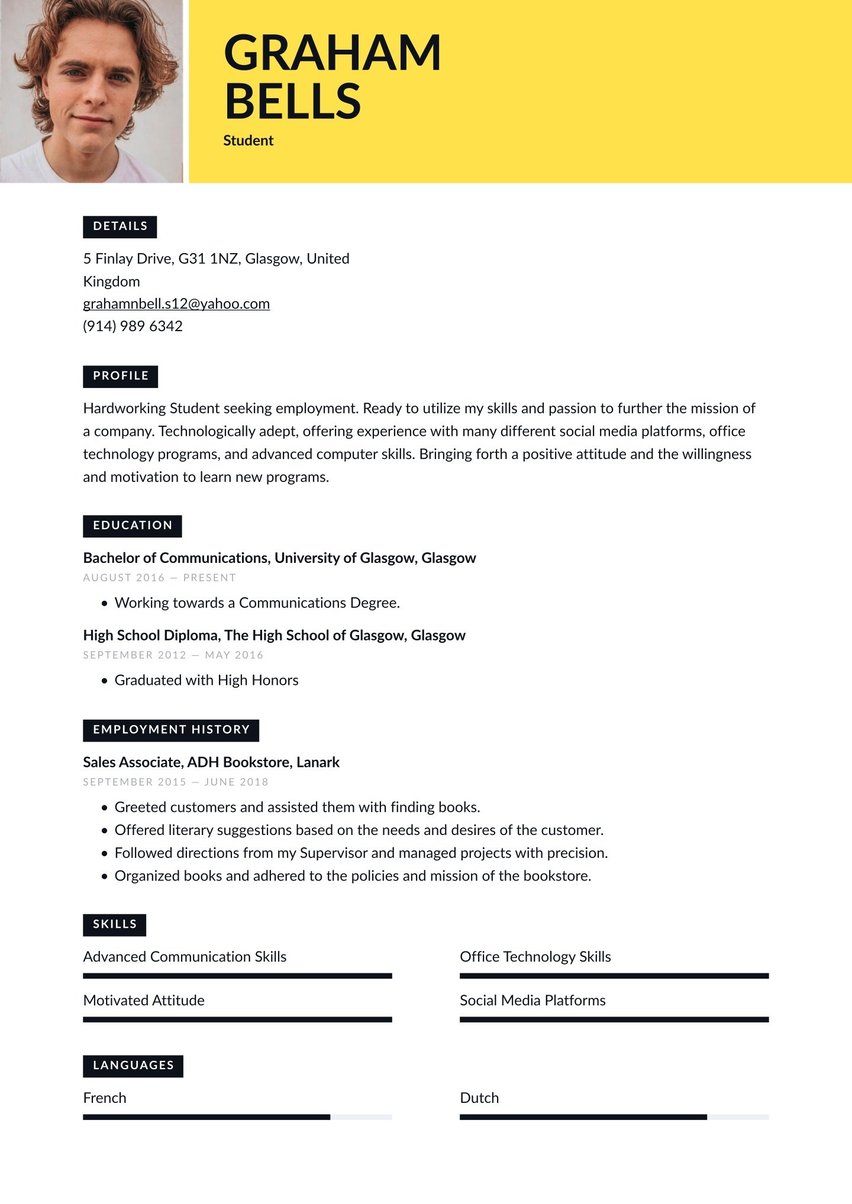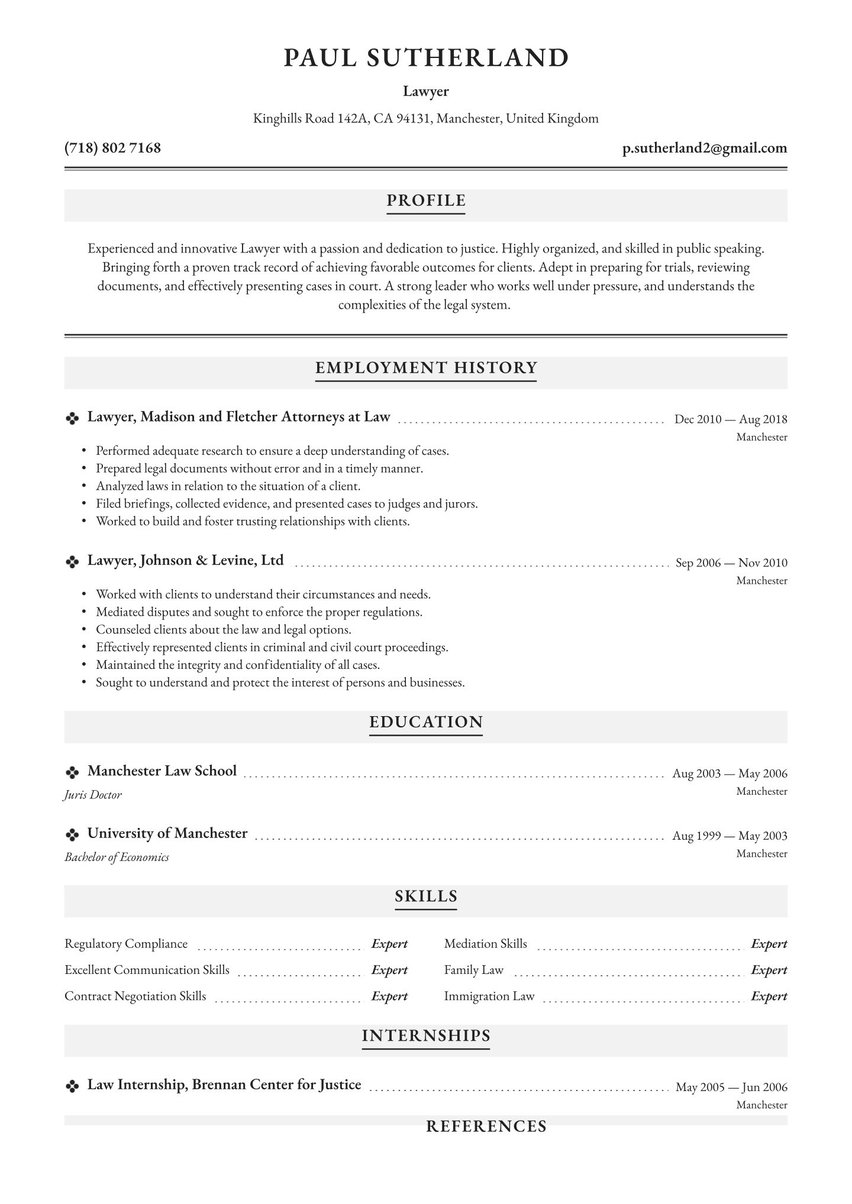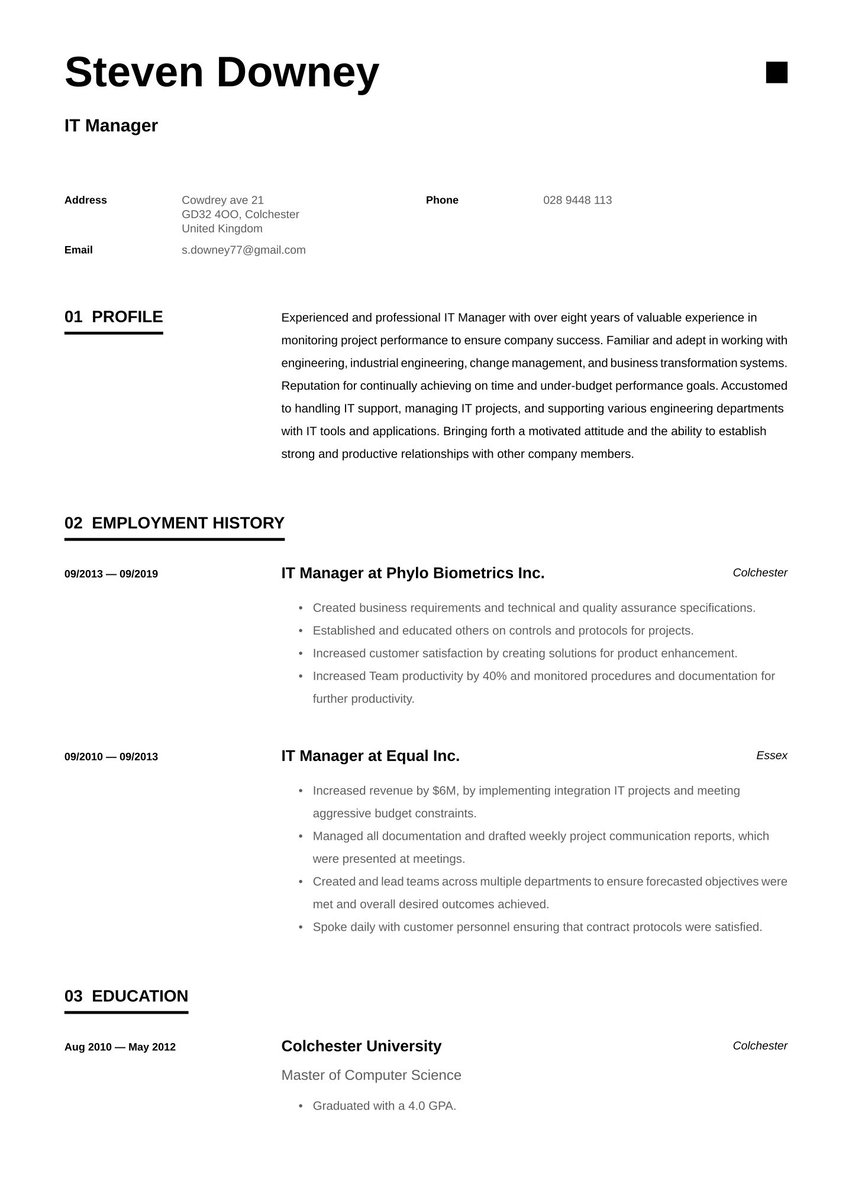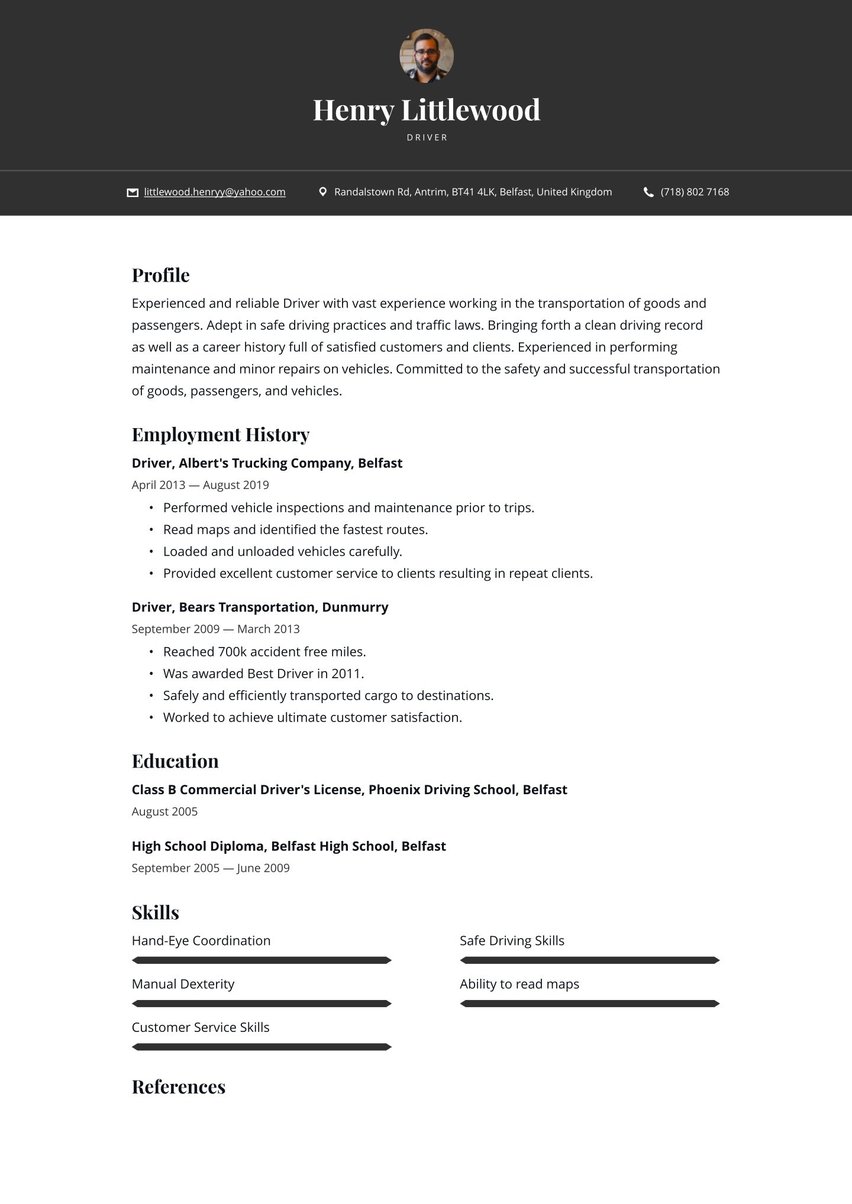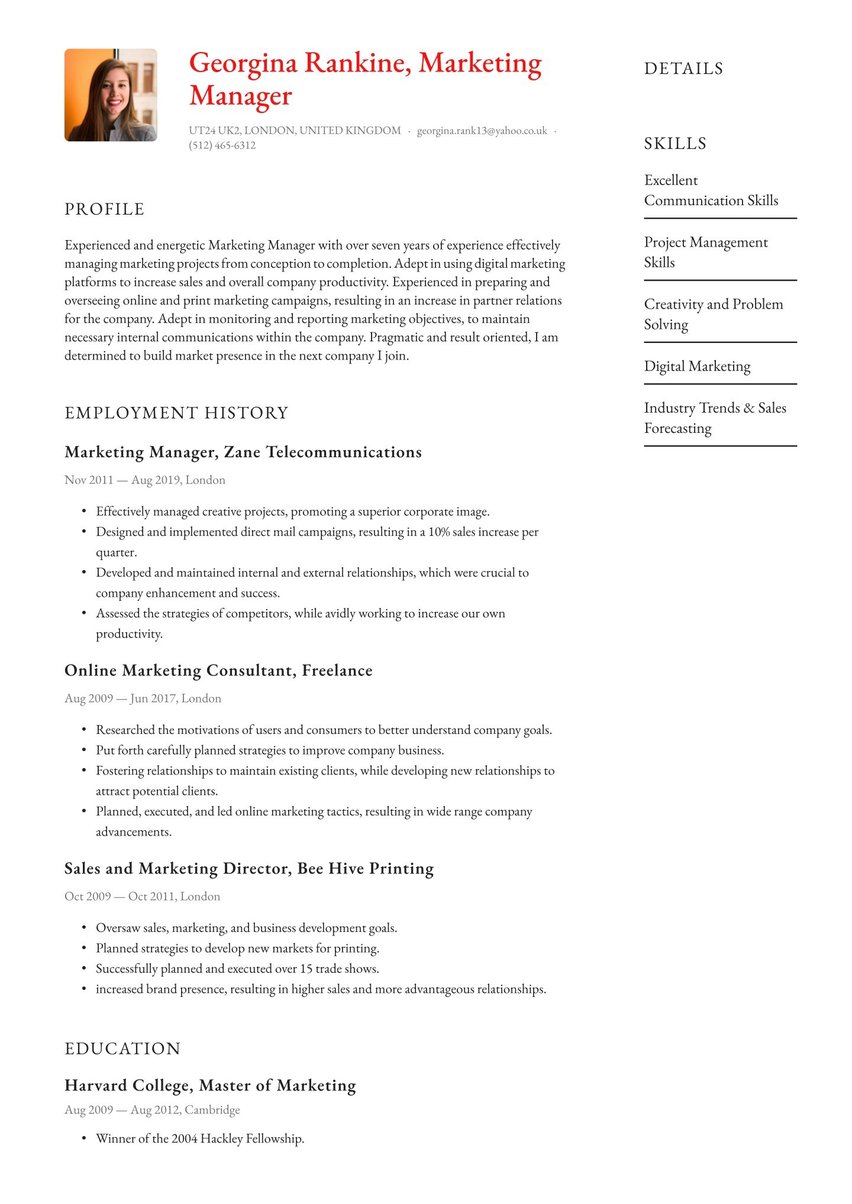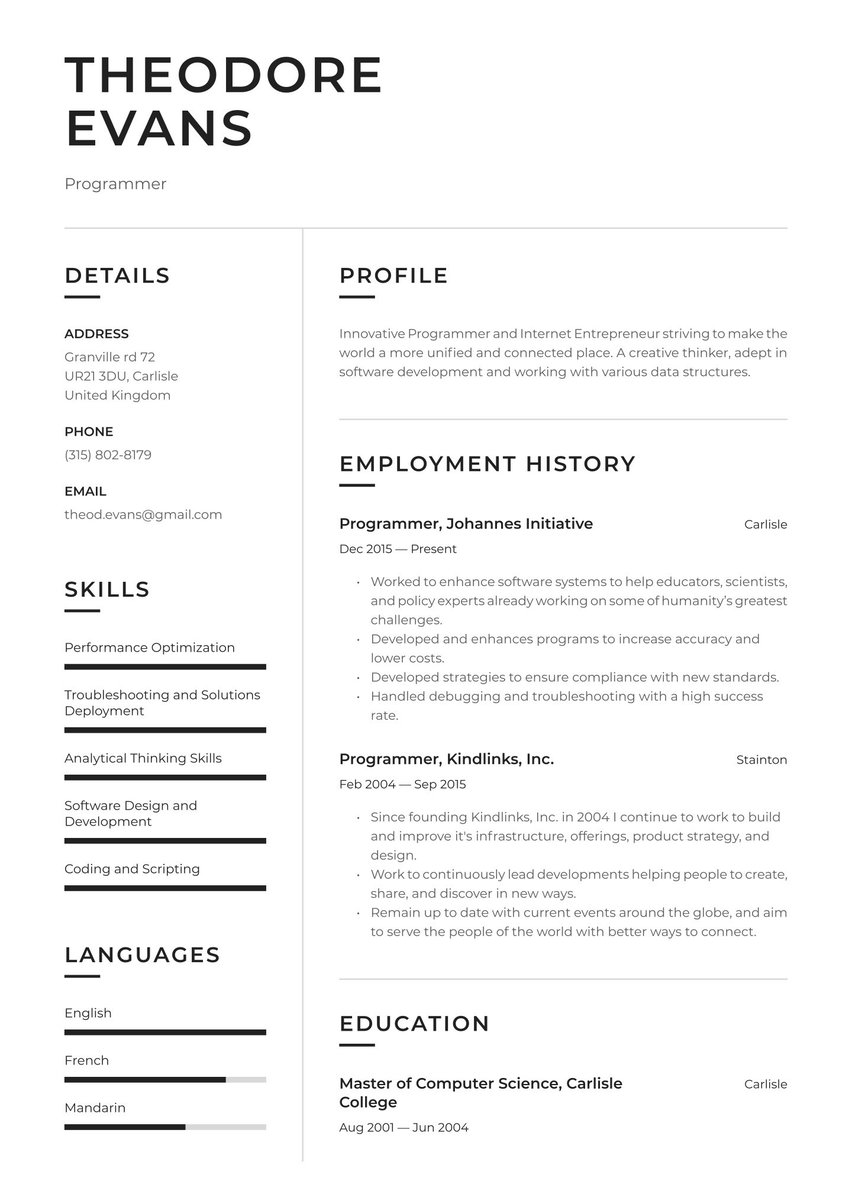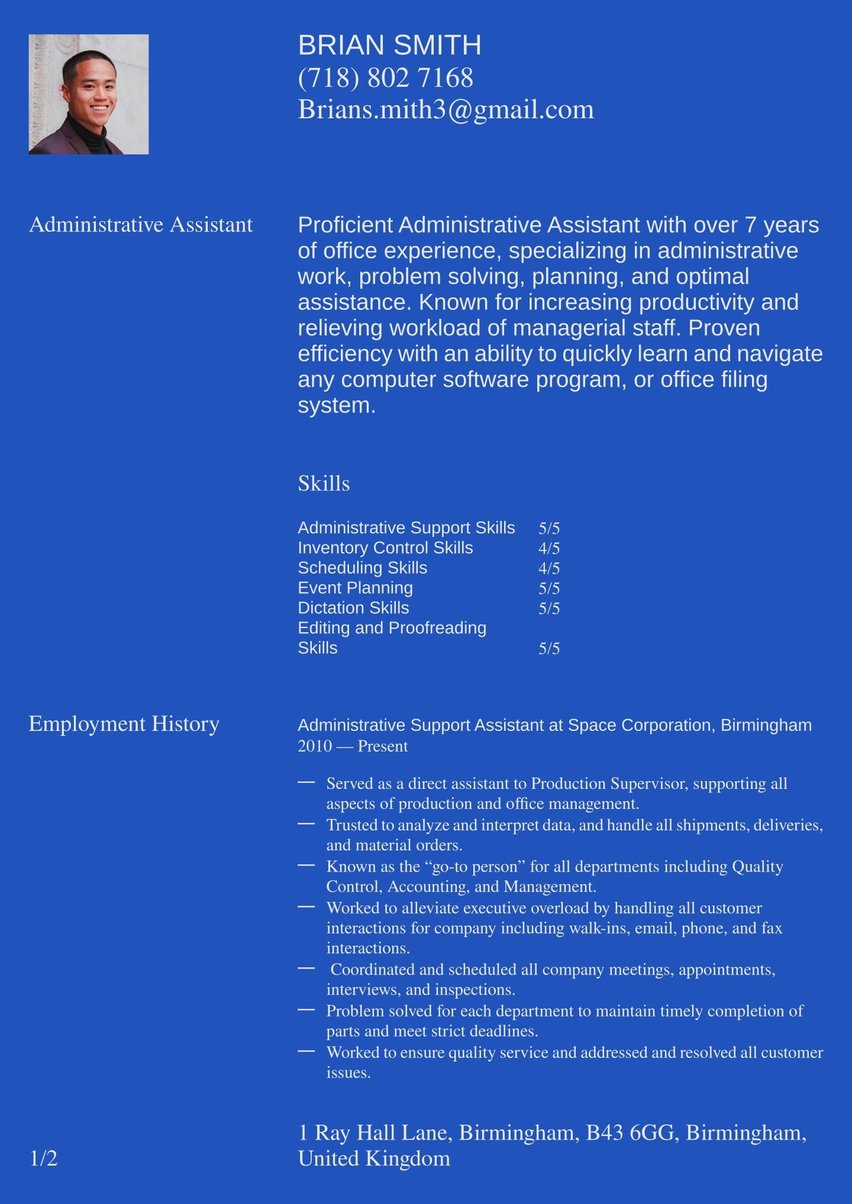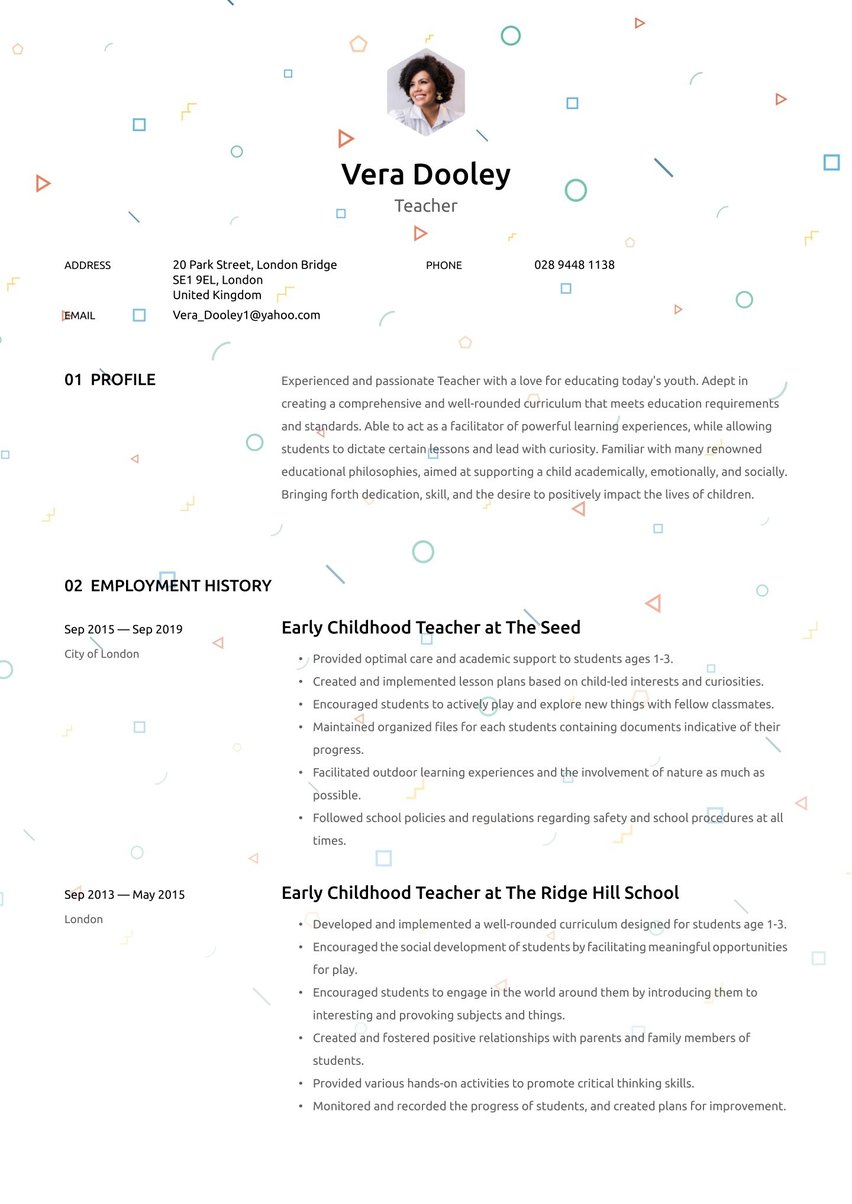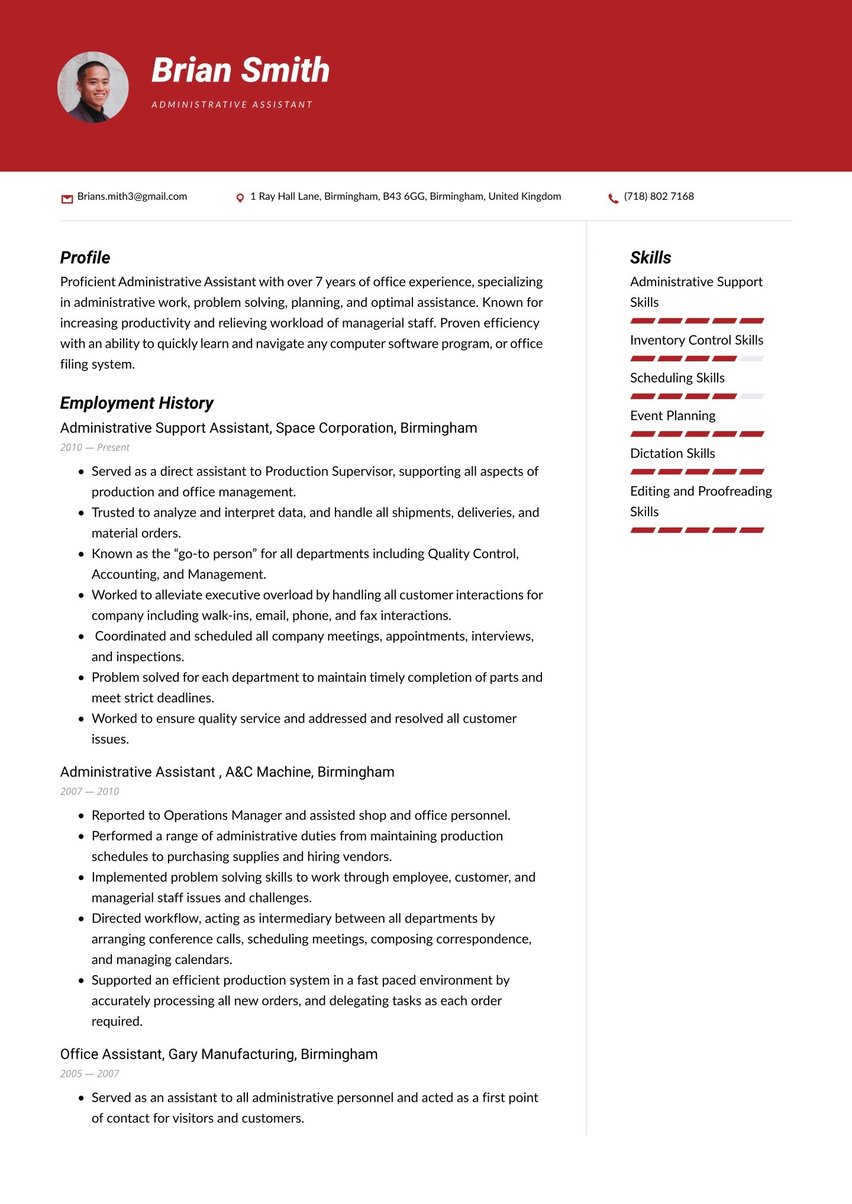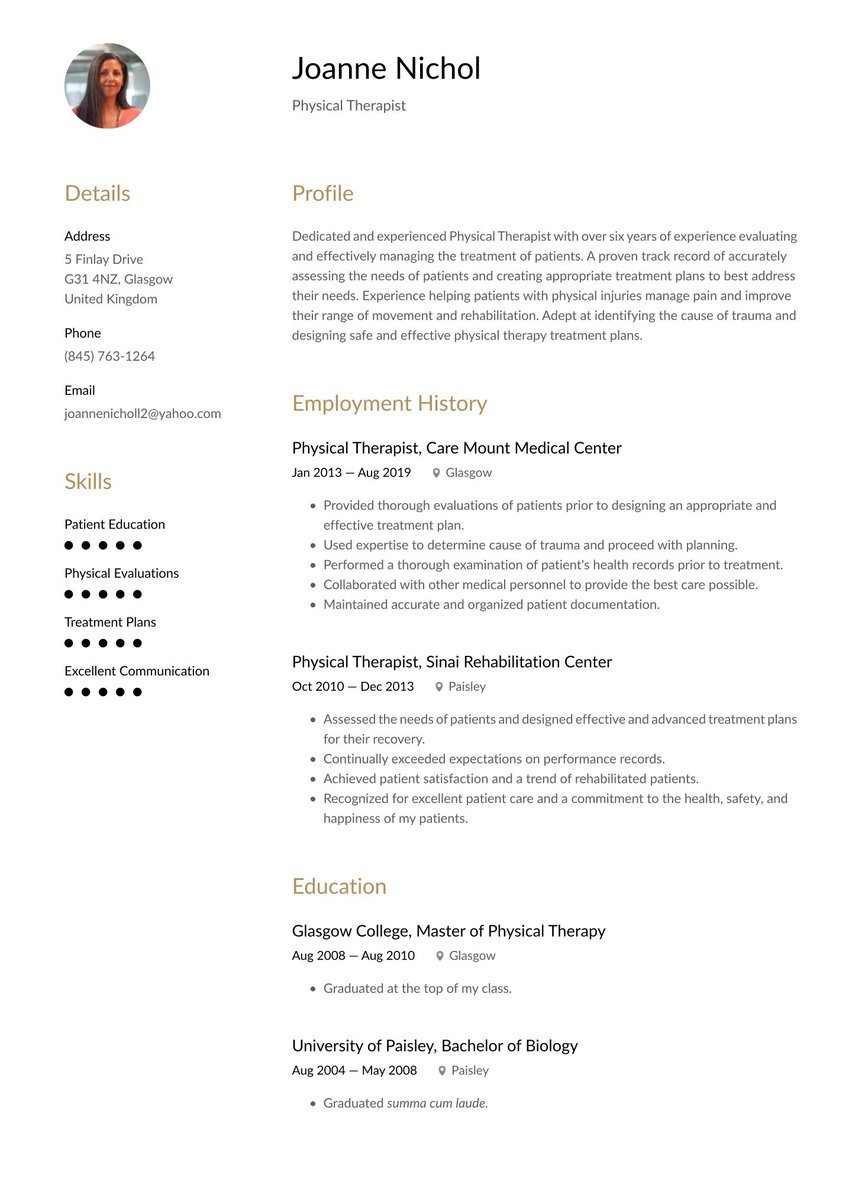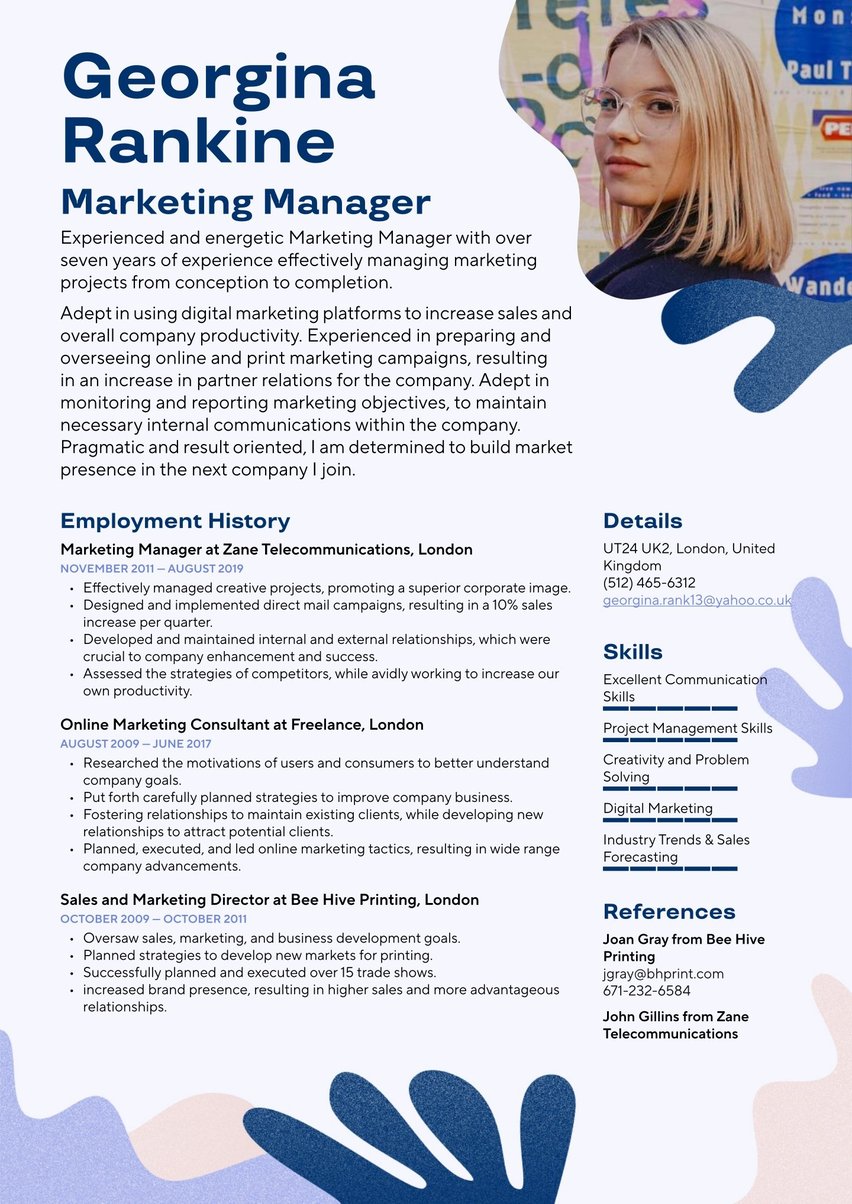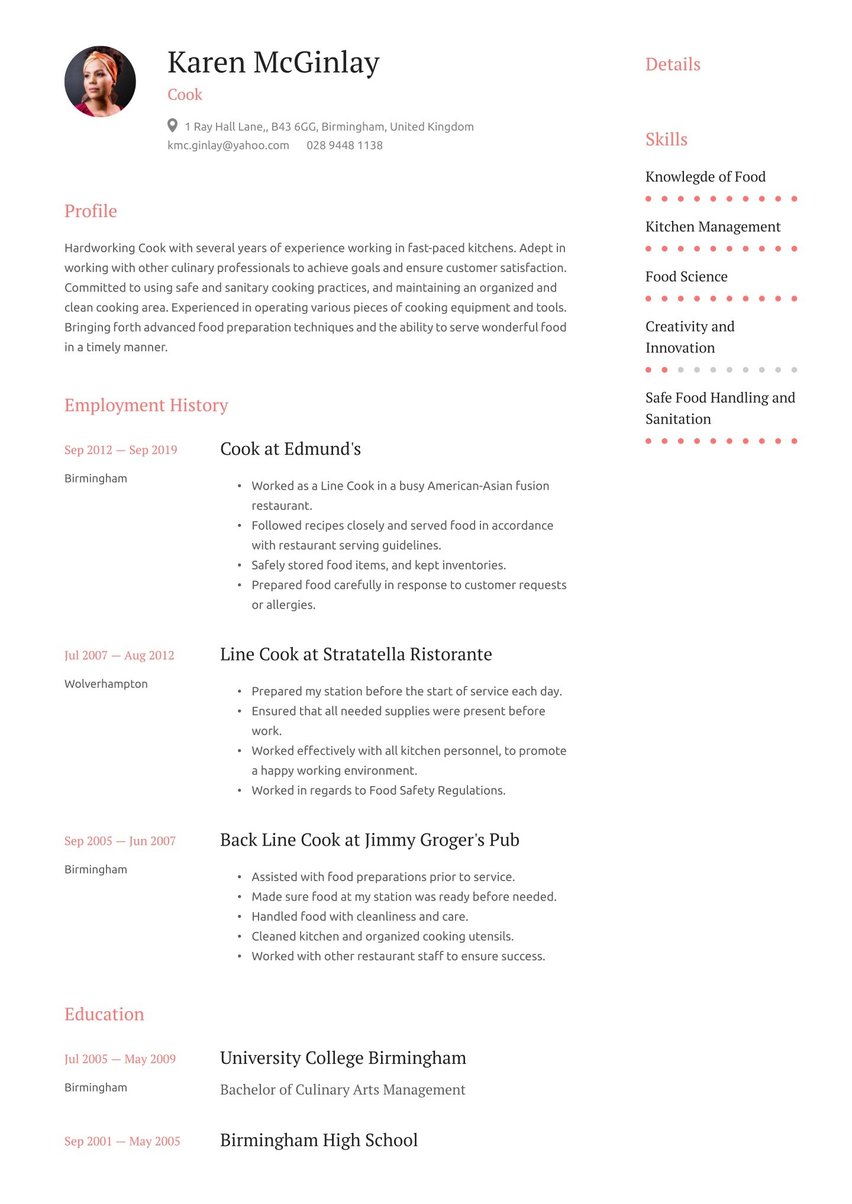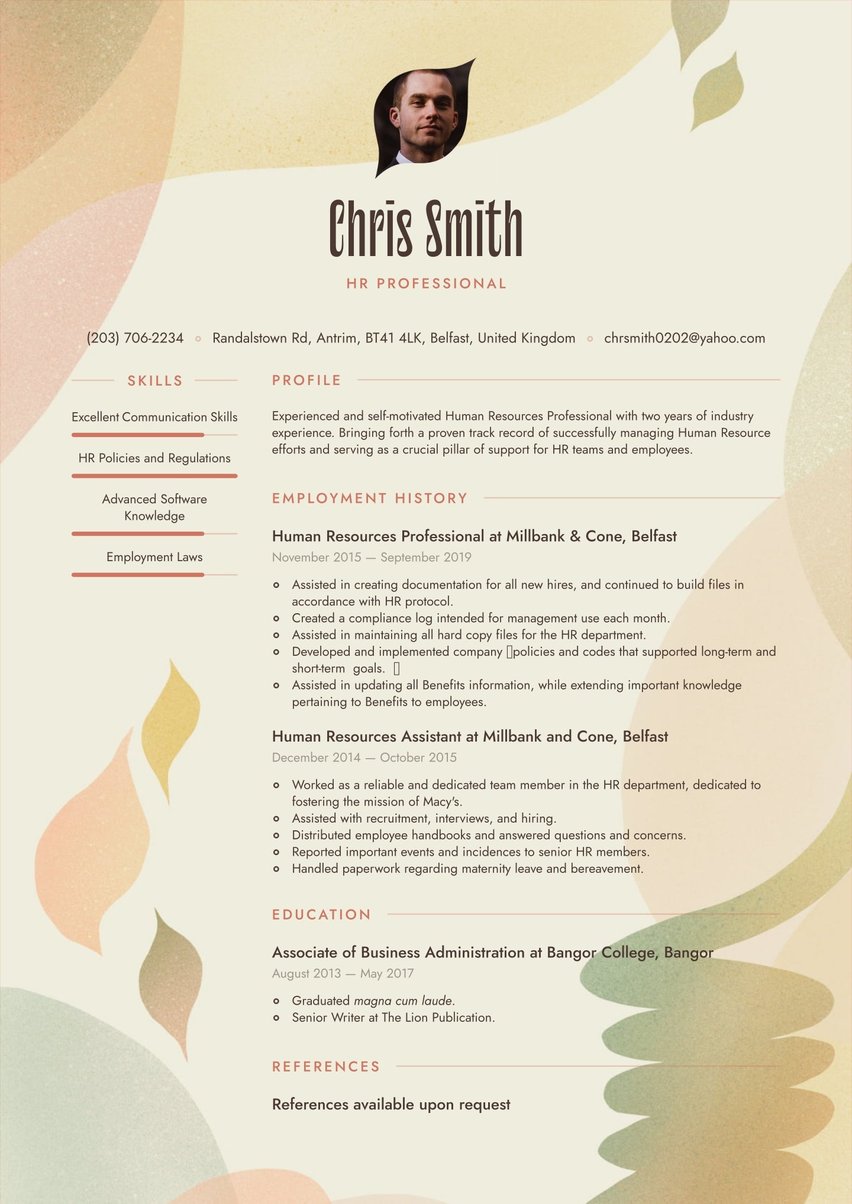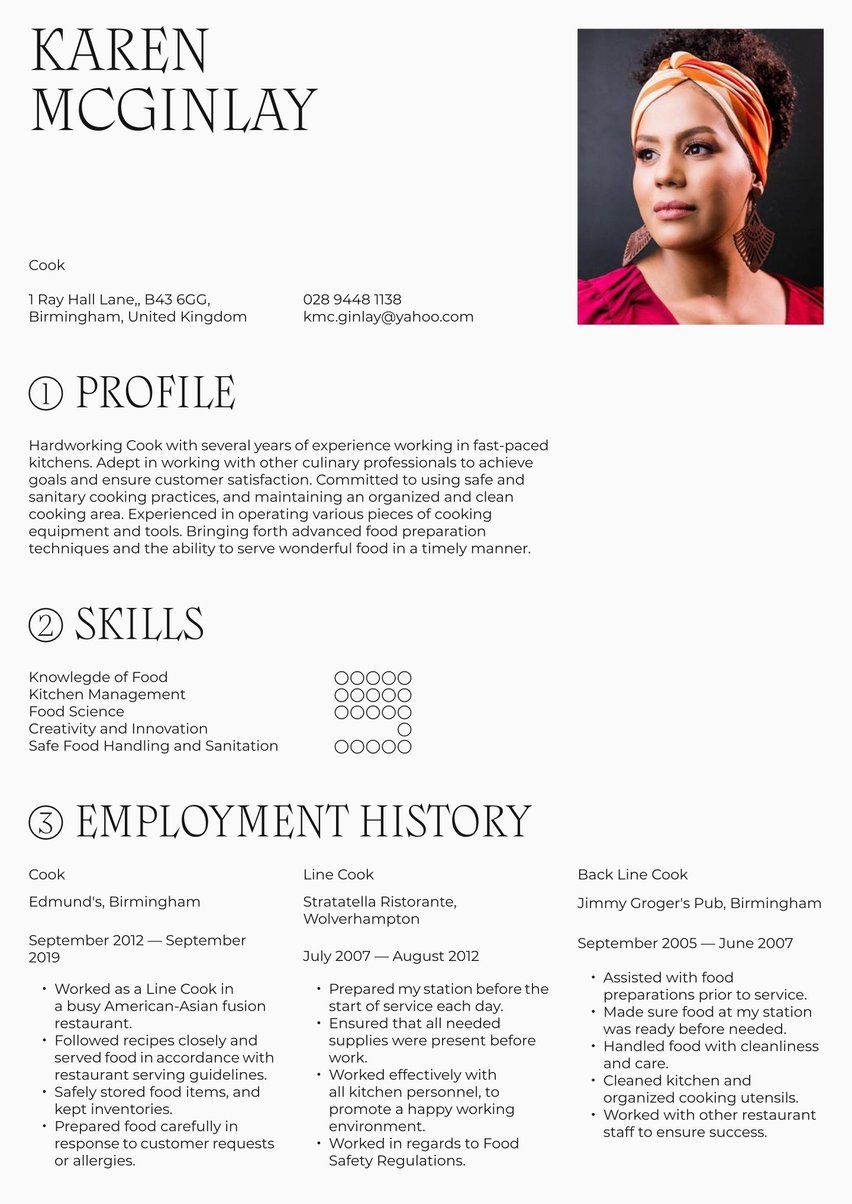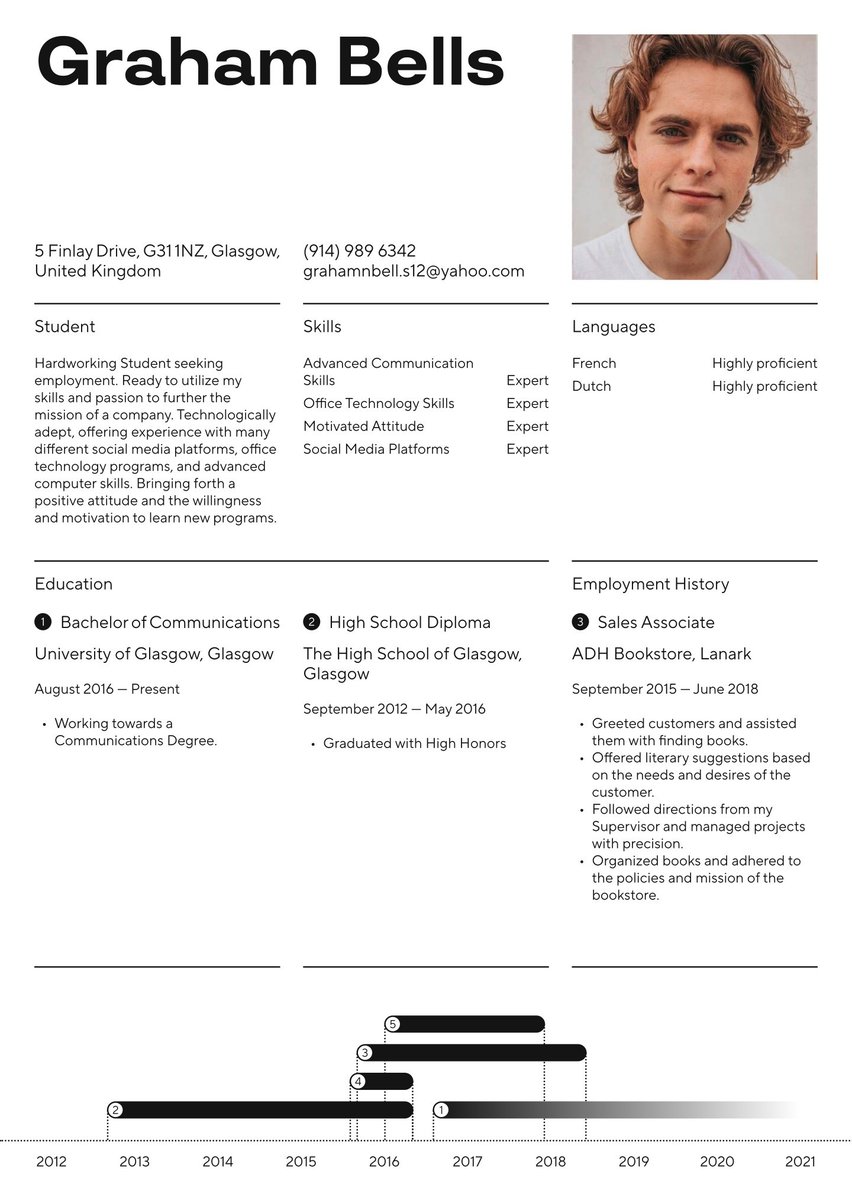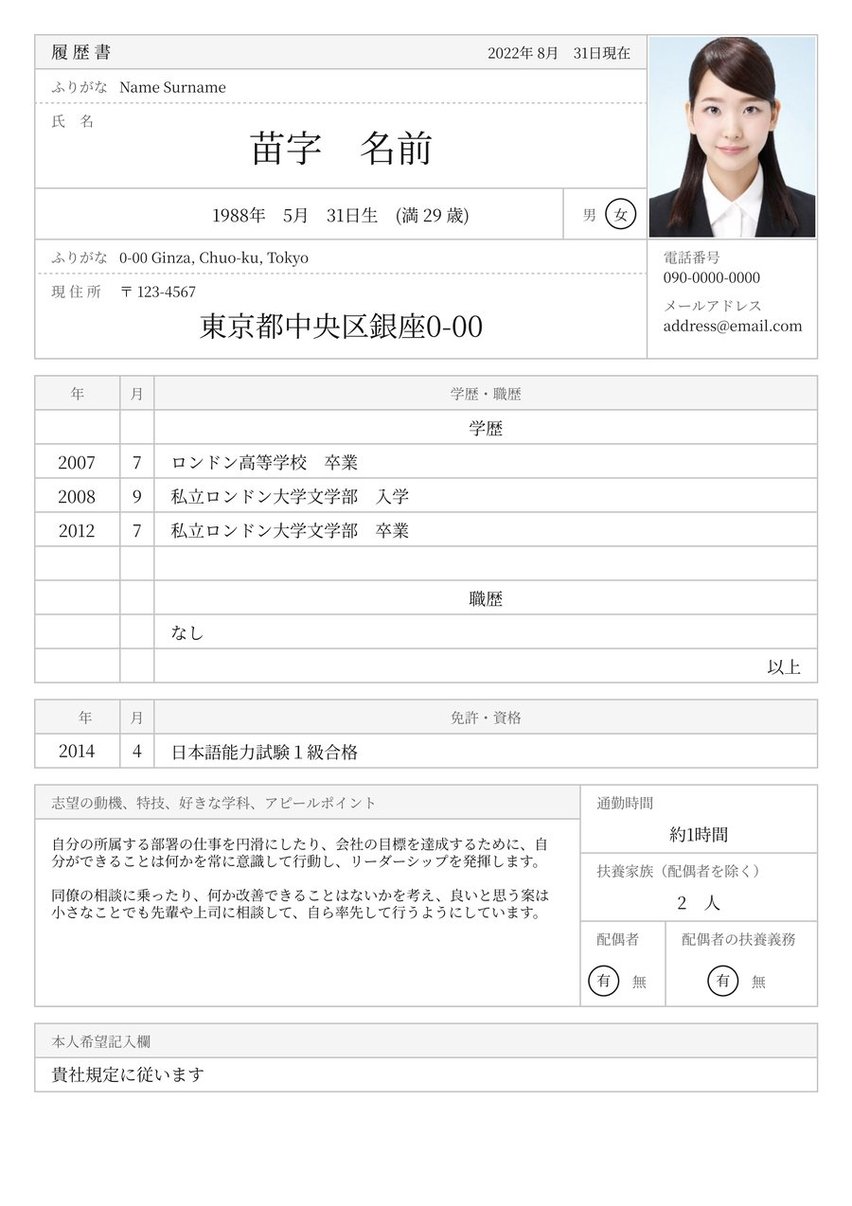Highly skilled and dedicated firefighter with 6 years of experience seeking a position within a fire and rescue service to protect lives, property, and the environment while promoting community safety.
02/2021 - present, Firefighter, Nottinghamshire Fire and Rescue Service, Nottingham
- Responded to emergency calls, including fires, road traffic collisions, and other incidents
- Conducted fire suppression, rescue operations, and first aid as needed
- Operated and maintained firefighting equipment, including pumps, hoses, and ladders
- Participated in regular training exercises and drills to maintain and improve skills
- Engaged in community outreach programs, promoting fire safety and prevention
02/2019 - 01/2021, Crew Manager, Nottinghamshire Fire and Rescue Service, Nottingham
- Supervised a team of firefighters during incidents, ensuring effective communication and coordination
- Conducted risk assessments and developed tactical plans for incident response
- Managed the maintenance and inventory of firefighting equipment and vehicles
- Provided guidance and support to junior firefighters, fostering their professional development
- Assisted in the development and delivery of training programs
- 02/2018, A Levels, Nottingham College, Nottingham
- 01/2016, GCSE, Foxwood Academy, Nottingham
- Comprehensive knowledge of firefighting techniques
- equipment
- and procedures
- Excellent physical fitness and ability to work in challenging and hazardous environments
- Strong leadership and teamwork skills
- Proficient in using breathing apparatus and other specialised equipment
- Effective communication and problem-solving abilities
- Committed to ongoing professional development and training
If you’re seeking a role that puts you at the forefront of action and gives you the opportunity to save lives, firefighting may be your calling. As a trained firefighter, you’ll be a first responder who provides aid to emergency calls and other incidents, ensuring the public’s safety.
Landing a firefighter job requires a strong firefighter CV. You need to show your education, experience, and traits that make you an excellent firefighter. Read our guide to get started.
CV guide for a firefighter CV
For the best chances at landing your next firefighter job, turn to Resume.io. We offer guides and CV examples covering over 150 careers and a CV builder that makes it easier than ever to create an amazing cv.
This CV guide and corresponding firefighter CV example will cover the following:
- How to write a standout firefighter CV
- Choosing the right CV format for firefighter jobs
- How to add your contact information
- Using summaries or profiles
- Adding your firefighter experience
- Listing your education and relevant certifications
- Picking the right CV design/layout
- What the firefighter job market looks like and what salary you can expect
How to write a firefighter CV
Start drafting your CV by clarifying the important sections to include. Be sure to add the following:
- The CV header
- The CV summary (aka profile or personal statement)
- The employment history section
- The CV skills section
- The education section
Optimising your CV requires showing your unique value as a firefighter. Think about what the organisation is looking for — likely, some prior experience, first aid certifications, and a track record of success — and convey how your background makes you the ideal fit to fill those needs. This formula can help:
- Show off your achievements rather than simply listing your past job duties. How did your presence make an impact in past organisations?
- Tailor your CV to each role and organisation you apply for.
- Use a CV template designed to be eye-catching and easy to read while remaining professional.
- Include the relevant keywords from the job advert in your CV. This will make it clear to the reader, whether that’s a human or ATS software, how you would fit into the role.
Optimise for the ATS
An applicant tracking system, or ATS, is a system used by companies and government agencies to collect and manage job applications. Some advanced systems may use algorithms to screen resumes for keywords that match the job description. If there’s a high match, your CV will move along to the next step.
For example, a job posting may call for things like “firefighter experience,” “emergency preparedness,” or “hazard reduction.” Your CV summary could thus include, “Over 10 years of firefighter experience with proven success in hazard reduction and emergency preparedness.”
For the best chance at success, pay close attention to the job posting to notice the most important keywords. Then — in an honest and accurate way — sprinkle them throughout your CV. The more, the better, as long as you include them organically and don’t just stuff them in.
Choosing the right firefighter CV format
Your firefighter cv must be clear, concise, and straightforward. When fighting fires and saving lives, there’s no time to waste — your CV should have the same sense of urgency.
The best format to use is reverse chronological, wherein you will focus mostly on your employment history by listing your most recent work first and working your way backwards. This makes it obvious to the recruiter or hiring manager up front that you have the required skills and expertise for the job.
However, if you’re looking for your first job or are making a major career change, you might try a skills-based CV format. Although this isn’t the preferred format for most recruiters, it lets you put the emphasis on your skills and traits instead of your work history.
Or, you can combine both formats into a hybrid that uses the best of both. Whichever you choose, there are plenty of CV templates in our CV builder. You can also check out CV examples that use each format to see them in action.
As for design, we recommend starting with a simple layout that is easy to read while still nice to look at.
Include your contact information
Your CV’s header is possibly the easiest part to draft but one of the most important. After all, you can’t respond to an emergency without knowing where to go. Similarly, without a header displaying your contact information, no one can contact you to set up an interview!
It’s most important to present this information clearly and professionally. Be sure to include the following:
- Full name & title. List your first and last name and the title of the role you are pursuing.
- Professional email address. Use a simple, clean email format like firstname.lastname@gmail.com. Avoid anything silly or unprofessional.
- Phone number. List a number where you can easily be reached, with a professional voicemail greeting and an inbox that can take new messages.
- Location. There’s no need to list your full address; instead, just list your city and country. If you’re open to relocating, you can add “Willing to Relocate.”
- LinkedIn. LinkedIn isn’t especially common among firefighters, but if you have an active profile that represents your skills, link to it here.
Don’t include:
- Date of birth: This isn’t customary or necessary and could potentially lead to age discrimination.
- Personal details: There’s no need to add your marital status, family status, passport number, etc.
First Name Last Name
Firefighter
[Phone number]
[Email address]
First Name Last Name
Seeking firefighter jobs
Full Street address
[Phone number]
Make use of a summary
As one of the most freeform parts of your CV, the summary (or profile) gives you the chance to share in your own words why you’re excellent at what you do. But be mindful of space — this section should only use about 2-4 sentences, so make your words count.
A compelling summary provides an overview of what you’ve accomplished and what sets you apart from others in the field. Don’t just reiterate your CV contents. Instead, write the overarching themes and highlights of your career to convey your unique value proposition.
Imagine you have only a few minutes to sell your skills and expertise to the hiring manager in a lift. What would be most important to share? How would you prove your value? Transform that into your CV summary.
Need inspiration for your summary? Check out our related CVs:
You can find adaptable firefighter CV example summaries below:
Dedicated, passionate school leaver looking to transition into firefighting. Knowledgeable about safety protocols and emergency response. Adept at using sound knowledge and experience to accurately assess a situation and move forward with a logical mediation plan. Dedicated to the safety of people everywhere.
Dedicated, passionate firefighter with 8+ years of experience in fire prevention and protection. Extensive knowledge of safety protocols and firefighting procedures. Experience providing aid to victims of disasters, including fires, car accidents, and other incidents. Adept at using sound knowledge and experience to accurately assess a situation and move forward with a logical mediation plan. Proven track record of superior performance and an obvious dedication to the safety of people everywhere.
Dedicated, passionate firefighter with 10+ years of experience in fire prevention and protection. Extensive knowledge of safety protocols and firefighting procedures. Experience providing aid to victims of disasters, including fires, car accidents, and other incidents. Adept at using sound knowledge and experience to accurately assess a situation and move forward with a logical mediation plan. Proven track record of team leadership and ensuring prompt response in high-stress situations.
Outline your firefighter work experience
Your work experience should be one of the focal points of your CV, so it’s important to do it right. Start by listing your current or most recent job and work backwards in reverse chronological format. Only go back 10-15 years; any further back at the information is likely irrelevant, and going too far back in time can result in ageism.
Keep your experience relevant to firefighting and first-response work. If you have other work history you want to include, you can consider a short “Other Experience” section.
Underneath each job, you’ll insert concise bullet point statements that describe your impact and contributions. Use action verbs that describe your achievements: for example, saved, prevented, conserved, led, responded.
Don’t just list your day-to-day responsibilities. Most anyone knows the generalities of a firefighter job, so your CV should go beyond that and delve into what makes you exceptional. A CV focused too much on basic duties might look like this:
- "Prevented fires"
- “Responded to emergency calls.”
- “Maintained equipment.”
These statements don’t show how you’ve impacted your organisation or public safety. To make them more impressive, you can focus on results and accomplishments. Think about the direct result of what you did. For example:
- "Leveraged fire prevention strategies to avert 20+ potential fire incidents, reducing damage to property by 40% and ensuring safety of over 100 individuals.”
- “Responded to emergency calls with an average response time of under 3 minutes, resolving crises with a success rate of 96%.”
- “Oversaw equipment maintenance schedule, executing inspections of over 100 pieces of equipment annually.”
Take a look at the firefighter employment history CV sample below:
Firefighter at Nottinghamshire Fire and Rescue Service, Nottingham
2021 - Present
- Responded to emergency calls, including fires, road traffic collisions, and other incidents
- Conducted fire suppression, rescue operations, and first aid as needed
- Operated and maintained firefighting equipment, including pumps, hoses, and ladders
- Participated in regular training exercises and drills to maintain and improve skills
- Engaged in community outreach programs, promoting fire safety and prevention
Crew Manager at Nottinghamshire Fire and Rescue Service, Nottingham
2019 - 2021
- Supervised a team of firefighters during incidents, ensuring effective communication and coordination
- Conducted risk assessments and developed tactical plans for incident response
- Managed the maintenance and inventory of firefighting equipment and vehicles
- Provided guidance and support to junior firefighters, fostering their professional development
- Assisted in the development and delivery of training programs
How to write a firefighter CV with no experience
If you want to make a career transition or land your first firefighting job but lack specific experience, you can focus on your transferable skills to increase your chances.
Emphasise any related experience you have. For example, have you worked as a security guard or held another safety-related role? Have you taken courses in public services or search and rescue? Volunteer work counts, too.
In a role like firefighting, it’s also good to display your passion for the position. A cover letter can be an excellent place to share this.
Include the key skills that make you a great firefighter
Your firefighter core skills CV section list should include hard and soft skills to illustrate the full range of your expertise.
Hard skills are demonstrable and can be assessed objectively, like the ability to use certain fire equipment or knowledge of fire mitigation techniques.
On the other hand, soft skills are evidence of your intrinsic personality traits or interpersonal skills — working well under pressure, taking the lead in a crisis, and solving complex problems.
Our CV builder provides plenty of pre-selected skills to choose from, as well as the option to upload your own.
Here’s what the skills box looks like in our firefighter CV template.
Key Skills and Proficiencies
While this section serves as an important snapshot of your skills, it’s not the only place your skills should appear on your CV. Ideally, they should be included throughout your CV, especially in your work history and summary sections.
As you draft your CV, highlight your:
- Fire-specific expertise by describing fire prevention and mitigation techniques you’ve used
- Emergency response skills by quantifying the callers you’ve served, average response times, and disasters addressed
- Ability to handle stress and pressure by demonstrating high-stress situations you’ve handled as a firefighter
The job advert is a great place to start when trying to decide which skills to include.
Detail your education & relevant firefighter certifications
There are various options to gain the education required to become a firefighter, and whichever route you choose, you should document it in your CV’s education section.
In reverse chronological order, list your educational credentials. As a firefighter, this could include a college course, apprenticeship, or training course.
Beyond formal education, however, this section is a great place to list any certifications or training relevant to firefighting. For example,
- Training and certifications include public services, fire and rescue, or fire service courses.
- Apprenticeships. If you served as a firefighter apprentice and gained valuable skills on the job, include it here.
- Organisations and affiliations. Memberships in trade associations like the Institute of Fire Engineers or trade unions like the Fire and Rescue Services Association show your commitment to the industry.
If you’re just starting as a firefighter and your relevant education is more substantial than your related work history, consider placing your education section before your employment history on your CV.
A Levels, Nottingham College, Nottingham
2018
GCSE, Foxwood Academy, Nottingham
2016
Pick the right CV layout and design for a firefighter CV
In a high-stress situation like fighting a fire, information must be conveyed clearly and rapidly so nothing gets missed. Your CV should do the same.
That’s where the design and layout come in. The best CV design puts the focus on the content, making it clear to the reader that you’re exceptionally qualified for the job. Avoid a cluttered or confusing layout, and don’t cause distraction with too many fonts or colours.
Instead, rely on a simple template that uses the right balance of text and whitespace, clean lines, and an easy-to-read structure.
Although there’s no simple shortcut to build a CV, our field-tested CV templates can make the process easier by taking care of the formatting and design for you.
Firefighter text-only resume example
Profile
Highly skilled and dedicated firefighter with 6 years of experience seeking a position within a fire and rescue service to protect lives, property, and the environment while promoting community safety.
Employment history
Firefighter at Nottinghamshire Fire and Rescue Service, Nottingham
2021 - Present
- Responded to emergency calls, including fires, road traffic collisions, and other incidents
- Conducted fire suppression, rescue operations, and first aid as needed
- Operated and maintained firefighting equipment, including pumps, hoses, and ladders
- Participated in regular training exercises and drills to maintain and improve skills
- Engaged in community outreach programs, promoting fire safety and prevention
Crew Manager at Nottinghamshire Fire and Rescue Service, Nottingham
2019 - 2021
- Supervised a team of firefighters during incidents, ensuring effective communication and coordination
- Conducted risk assessments and developed tactical plans for incident response
- Managed the maintenance and inventory of firefighting equipment and vehicles
- Provided guidance and support to junior firefighters, fostering their professional development
- Assisted in the development and delivery of training programs
Skills
- Comprehensive knowledge of firefighting techniques, equipment, and procedures
- Excellent physical fitness and ability to work in challenging and hazardous environments
- Strong leadership and teamwork skills
- Proficient in using breathing apparatus and other specialised equipment
- Effective communication and problem-solving abilities
- Committed to ongoing professional development and training
Education
A Levels, Nottingham College, Nottingham
2018
GCSE, Foxwood Academy, Nottingham
2016
Firefighter job market and outlook
While a firefighter job requires physical fitness, there is otherwise a fairly low barrier to entry, so opportunities are available to many kinds of people.
There are also various types of firefighting work to be done, including fire investigation, search and rescue, regulatory fire safety, and more.
Across the UK, there are numerous fire and rescue services including 46 in England, three in Wales, as well as the Scottish Fire and Rescue Service and Northern Ireland Fire & Rescue Service. There are also opportunities in civil ports, forests, private companies, the Ministry of Defence, and the Royal Air Force.
These services typically hire when there is a need to replace prior workers who have left the service or retired; there can be quite a bit of competition for open roles, especially as cuts to the public sector can reduce the availability of jobs.
What type of salary you can expect as a firefighter
Firefighters make an average of £27,000 to £40,00 per year, according to the National Careers Service. However, how much an individual earns depends on their experience level and title.
For example, trainee apprentices at the London Fire Brigade may earn £32,000-£33,000. As firefighters work their way up the ladder, pay increases: typical firefighters can bring in £43,000-£47,000 annually. Officers and commanders, with more of a leadership role, bring in as much as £64,000.
Key takeaways for building a firefighter CV
Working as a firefighter puts you uniquely positioned to save lives and directly impact public safety. It’s a great career for anyone looking for a physical job full of variety while being able to work well under pressure and stress.
For the best chances of being selected, your CV must convey the experience, skills, education, and accomplishments that make you an excellent firefighter.
Our online CV builder helps you streamline the application process and design a compelling CV that lands the job.

